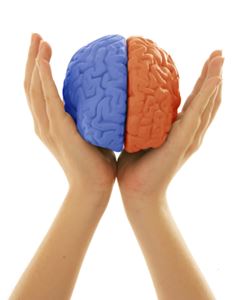Are we biologically programmed to have a preference for Thinking or Feeling?
Paul Deakin

Recent research published in Psychological Science, which uses structural magnetic resonance imaging to study cognitive structure, has suggested that personality characteristics may be linked to the volume of different regions of the brain. In addition, a new and exciting piece of research published in NeuroImage and summarised on the ScienceDaily website may shed further light on the topic. This research may be of particular interest to MBTI practitioners.
The research suggests that, when at rest, our brains cycle between social networks (ie reasoning about the mental states of other persons) and analytical networks (ie reasoning about the causal/mechanical properties of inanimate objects). However, when faced with a social or analytical problem-solving task, our brain engages either one neural pathway or the other.
It is the ‘either/or’ distinction that is so interesting. The research suggests that when one pathway is used, the other is suppressed. In any one instance, we either respond on the basis of logic, or on the basis of empathy. The two are, at least to some extent, mutually exclusive in the brain. The journal article suggests that this might go some way to explaining why even the brightest people can make flawed decisions.
This echoes the use of the MBTI Judging functions (Thinking and Feeling) in decision-making. Thinking and Feeling are two fundamentally different ways of evaluating information to make decisions. According to type theory, we each have a preference either for making decisions from a detached and rational standpoint (ie a Thinking preference), or for doing so from a more involved standpoint (ie a Feeling preference).
According to MBTI theory, developing a reliable and effective decision-making function requires us to direct most of our energy to one side of this dichotomy, and therefore take it away from the other, analogous to developing manual dexterity by developing skills with either the left hand or the right hand. The goal is not to develop both functions equally, but rather to gain excellence in the use of the preferred process, and then to develop the less-preferred process to provide balance and support.
This neurological research lends support to this aspect of type theory, demonstrating that anyone can perform both styles of decision-making - but not simultaneously.